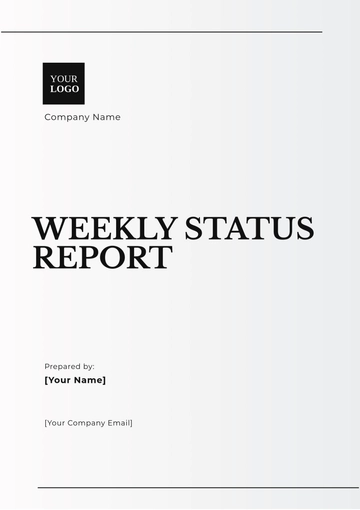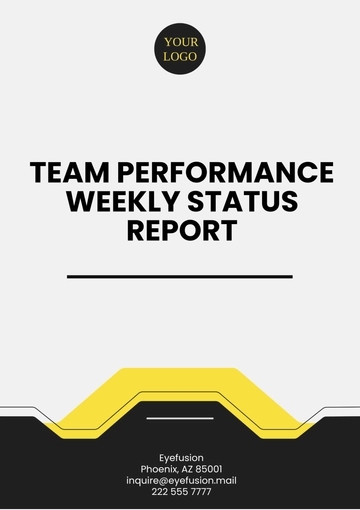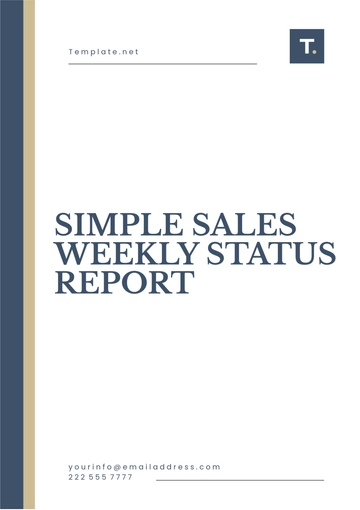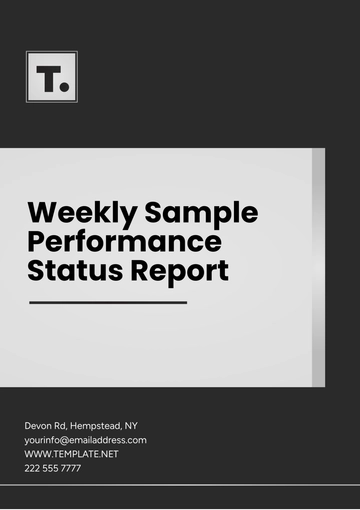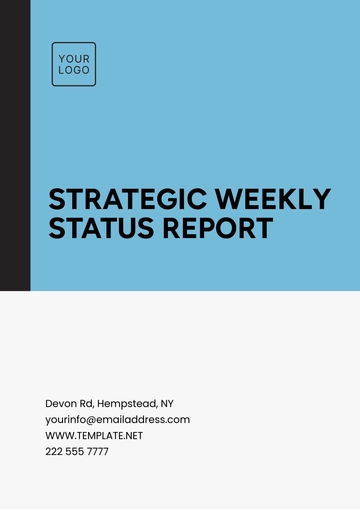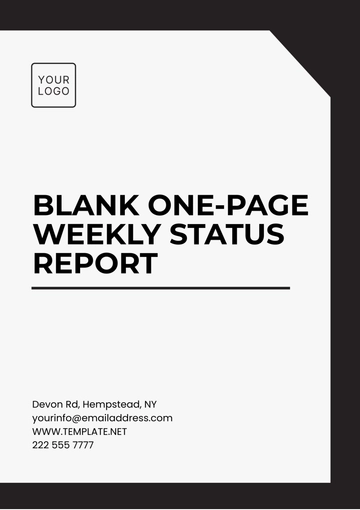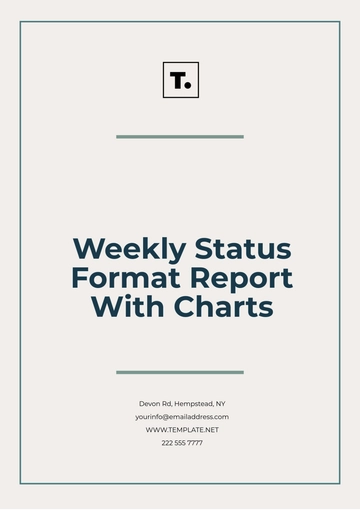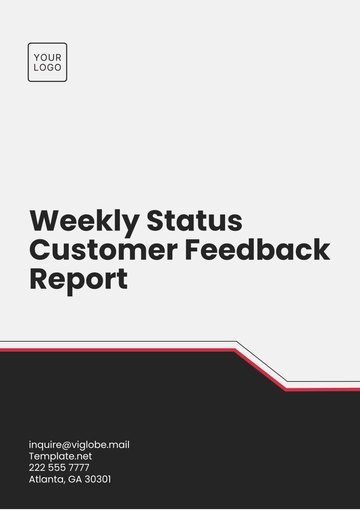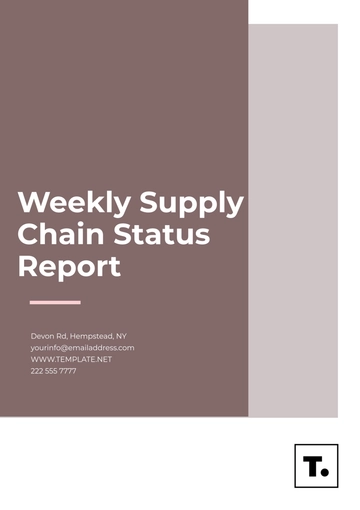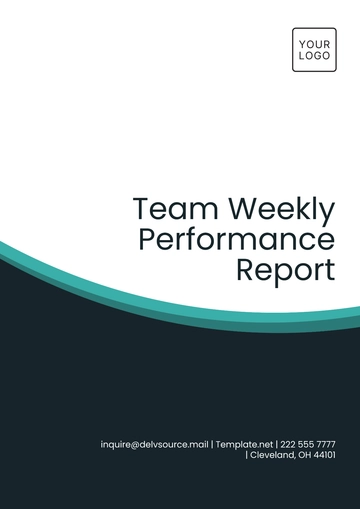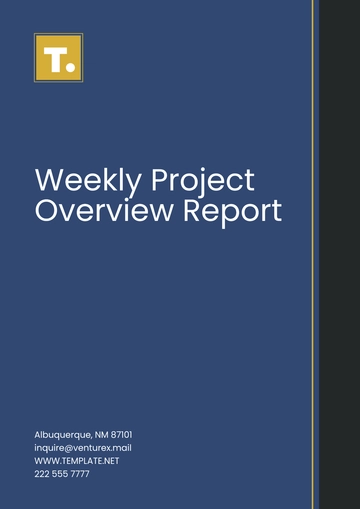WEEKLY BEHAVIOUR REPORT
I. Introduction
The [YORU DEPARTMENT] Weekly Behavior Report aims to provide a comprehensive overview of behavioral patterns observed within the team during the week. This report serves as a valuable tool for [YOUR COMPANY NAME] managers to analyze trends, identify areas of improvement, and recognize outstanding performance. By documenting behaviors, both positive and negative, we strive to foster a culture of accountability and continuous growth.
Throughout the report, [YOUR NAME] encourages open dialogue and constructive feedback from team members. Understanding individual behaviors enables us to collectively work towards our organizational goals and uphold the values of [YOUR COMPANY NAME].
II. Methodology
The data for this report was gathered through [YOUR DEPARTMENT]'s monitoring systems, including [SOFTWARE NAME], [SENSOR NAME], and [DATA COLLECTION METHOD]. The information collected includes but is not limited to [SPECIFIC BEHAVIORS OR METRICS].
The data was then [PROCESSED/ANALYZED/VALIDATED] to ensure accuracy and reliability.
Throughout the data collection process, [YOUR DEPARTMENT] employed various techniques to gather comprehensive insights into [EMPLOYEE BEHAVIORS, WORK PATTERNS, AND PRODUCTIVITY LEVELS]. These techniques encompassed both automated data capture through [SOFTWARE NAME] and manual data logging via [SENSOR NAME].
Additionally, [DATA COLLECTION METHOD] was utilized to gather real-time data on [SPECIFIC BEHAVIORS OR METRICS]. This multi-faceted approach ensured the thoroughness and reliability of the data collected for analysis.
Furthermore, the gathered data underwent rigorous [PROCESSING/ANALYSIS/VALIDATION] procedures to filter out any anomalies or discrepancies.
This involved [DATA CLEANING, STATISTICAL ANALYSIS, AND CROSS-REFERENCING WITH OTHER DATASETS] to verify the accuracy and consistency of the information. By adhering to these methodological protocols, [YOUR DEPARTMENT] ensured that the findings presented in this report are robust and actionable, providing valuable insights for decision-making and strategic planning.
III. Quantitative Analysis
Number of Incidents Reported: [NUMBER OF INCIDENTS]
Categories of Behavior: Cooperation, Leadership, Efficiency, Policy Adherence, Other
Positive vs Negative Incident Ratio: [POSITIVE INCIDENTS] positive to [NEGATIVE INCIDENTS] negative
The data demonstrates trends in employee behavior which are critical for management to understand workforce dynamics. Analyzing these trends helps in identifying training needs and planning further steps for enhancing workplace culture.
IV. Recommendations
Based on the observations and data gathered, several recommendations are proposed to improve behaviors and align them with [YOUR COMPANY NAME]'s mission and policies.
These recommendations include both reinforcement strategies for positive behaviors and corrective actions for areas where behaviors do not meet the company standards. It’s crucial to approach behavioral issues with a constructive perspective aimed at continuous improvement.
[RECOMMENDATION 1]: Description of the recommendation and its anticipated impact.
[RECOMMENDATION 2]: Description of the recommendation and its anticipated impact.
[RECOMMENDATION 3]: Description of the recommendation and its anticipated impact.
Implementing these recommendations will not only enhance [YOUR COMPANY NAME]'s overall organizational culture but also contribute to increased productivity and employee satisfaction.
V. Appendices
Weekly Behavior Metrics Summary
Metric | Week 1 | Week 2 | Week 3 | Week 4 |
|---|
METRIC 1 | [DATA] | [DATA] | [DATA] | [DATA] |
METRIC 2 | [DATA] | [DATA] | [DATA] | [DATA] |
METRIC 3 | [DATA] | [DATA] | [DATA] | [DATA] |
VI. Findings
A. Key Behavior Metrics
[METRIC 1]: The data shows a consistent trend of improvement in [METRIC 1] over the four-week period, with notable increases in Week 3 and Week 4.
[METRIC 2]: There is a slight fluctuation in [METRIC 2], with a peak observed in Week 2 followed by a gradual decline in subsequent weeks.
[METRIC 3]: [METRIC 3] demonstrates a steady performance throughout the four-week period, with minimal variance between weeks.
B. Trends Analysis
Trend 1: Overall, there is a positive trend in behavior metrics, indicating an upward trajectory in employee performance.
Trend 2: The fluctuations observed in [METRIC 2] suggest potential areas for further investigation to identify underlying factors influencing behavior.
Trend 3: Despite variations in individual metrics, the overall trend indicates stability in behavior patterns over time.
VII. Conclusion
In conclusion, the analysis of behavior metrics over the past four weeks provides valuable insights into the dynamics of [YOUR COMPANY NAME]. The findings indicate a positive trend in employee performance, with notable improvements observed in certain key metrics. Despite fluctuations in some areas, overall behavior patterns remain stable, suggesting a consistent adherence to company standards and policies.
Moving forward, it is essential for [YOUR COMPANY NAME] to continue monitoring behavior metrics closely and implementing strategies to reinforce positive behaviors while addressing any areas of concern. By fostering a culture of continuous improvement and aligning behaviors with the company's mission and values, [YOUR COMPANY NAME] can further enhance productivity, employee satisfaction, and overall organizational success.
Report Templates @ Template.net

